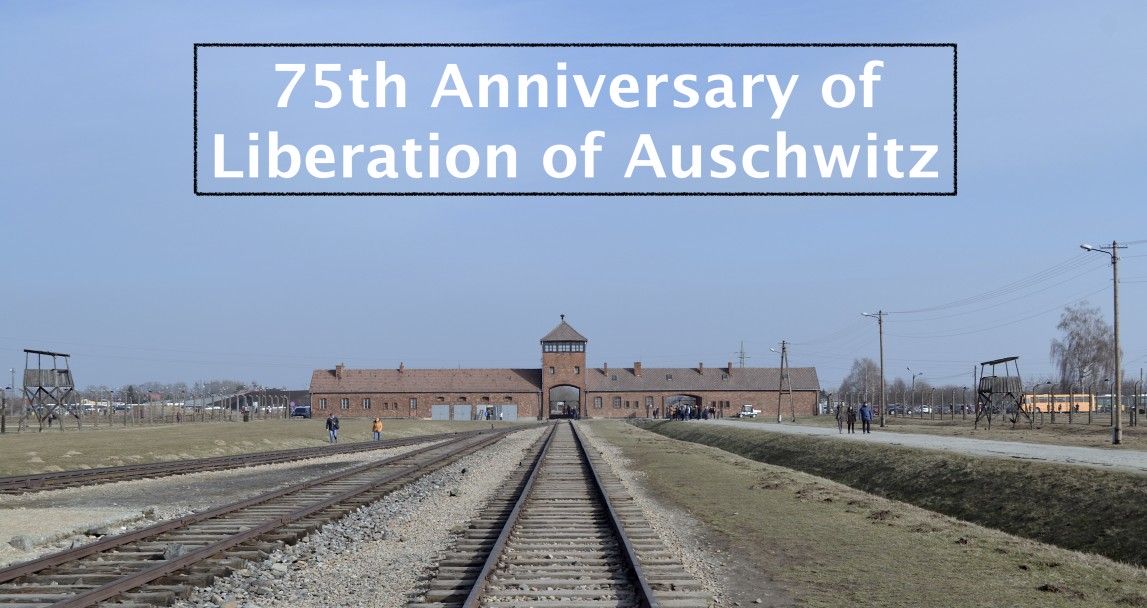The Liberation of KL Auschwitz

27 JANUARY 2020
January 27, 2020 is the day of 27th anniversary of liberation of Auschwitz Concentration Camp. The major international commemoration will take place at the place of former Nazi German Concentration and Extermination Camp Auschwitz-Birkenau in Oświęcim. The motto of this year's event is: 'We have a dark premonition, because we know', which are the words of the former prisoner Załmen Grabowski - a Polish Jew, who was killed during the revolt of Sonnderkommando.
Among many important persons who were invited to attend the ceremony, former prisoners of Auschwitz Concentration Camp will be undeniably the most honoured guests. It is supposed that about 200 of them will be present at the event, including the citizens of Poland, US, Canada, Israel, Australia and other European countries. The invitation was confirmed also by the representatives of numerous European countries, such as Germany, Austria, Spain, Greece, Sweden and United Kingdom, but also Israel and Australia. The schedule of the anniversary include speeches of former prisoners of Auschwitz, the speech of the director of the Auschwitz Memorial Dr. Piotr Cywiński and paying respects to the Victims at the monument in Birkenau. All the individuals as well as the organized groups who have no invitations but wish to participate in the event, will be allowed to get only into sector BI of the former Birkenau camp. After the official part of the ceremony is over, the visitors from the sector BI will be given the opportunity to come closer to the Memorial and pay tribute to the Victims.
EVACUATION
As a result of threatening situation on the East front, on August 1944 Nazis started to prepare liquidation of the camps. From August 1944 by mid-January 1945 about 65 000 male and female prisoners, including almost all the Poles, Russians and Czechs, were evacuated from the KL Auschwitz into the depths of the Third Reich. In the meantime, on the autumn 1944 camp's authorities decided to kill all the workers of Sonnderkommando, since they were eye-witnesses of the Nazi crimes. This decision provoked the famous revolt of Sonderkommando's members, who, being aware of their fate, tried to strike back.
Ultimately on January 17, 1945, when the Soviet army reached Kraków, Germans started the final liquidation of the Auschwitz Concentration Camp, which resulted in evacuation from KL Auschwitz and its sub-camps about 56 000 prisoners. These prisoners were forced to walk in the middle of winter dozens of kilometres to the western parts of Poland. The main evacuation routes of so-called Death Marches led through the Upper and Lower Silesia to Wodzisław Śląski and Gliwice towns, where the prisoners were transported further westwards by rail (in the direction of Austria and Germany). During the evacuation the SS guards shot mercilessly prisoners who tried to escape as well the ones who were too exhausted to follow the group. It can be estimated that even between 9 000 and 15 000 prisoners of KL Auschwitz died during the evacuation operation. However, Nazis managed to evacuate about 100 000 prisoners, who were further abused as slave labourers, as well as a large amount of loot which used to belong to the camp's prisoners.
LIQUIDATION
The next step was covering evidences of German crime. On January 20, 1945 Crematoria II and III were blown up and on January 26 Crematorium V was destroyed as well. On January 23, Canada II warehouse was set on fire. What's more, all the important documents including prisoners' files and registration forms were being burnt. However, the rush was the reason why Nazis failed to destroy all the things which could prove them guilty. At that time in Auschwitz I, Auschwitz II and other sub-camps there were still about 9 000 prisoners (including approximately 500 children), the majority of which were sick and extremely exhausted. These prisoners would certainly not get through hardships of evacuation, so the camp's authorities decided to murder them all. In the end, before the last columns of prisoners left the concentration camp, SS killed in the camp about 700 Jewish prisoners.
Most of the people abandoned in the camp managed to avoid this fate, which proves the great hurry of the escaping Nazis. After the evacuation, the situation of the prisoners left behind in the camp was nothing better that previously. They didn't have access to food and got cold in unheated rooms. For this reason, many of them tried to get into food warehouse on their own. This brave action very often resulted in a painful death from overeating, since famished organisms of captives were not ready for such a great dose of food.
LIBERATION
On the day January 27, 1945, Red Army soldiers stepped into Oświęcim. The troop of 60th Army of 1 Ukrainian Front were the first to reach Auschwitz Concentration Camp. The prisoners greeted the Soviet army, which in fact represented Stalinists regime, as real heroes and liberators. On arrival, the soldiers found about 600 corpses of prisoners who had been shot by SS men during the evacuation of KL Auschwitz as well as of those who died of exhaustion. But fortunately, in the Main Camp, Birkenau and Monowitz sub-camp about 7 000 prisoners lasted until liberation.
Those of them who needed no urgent medical aid were leaving the camp and coming back to their families. However, the majority of the prisoners was taken into custody and placed in provisional field hospitals, which were established on the area of liberated Birkenau camp. These hospitals functioned until October 1945, when most of the patients were discharged home and some of them moved to hospitals in Kraków.
